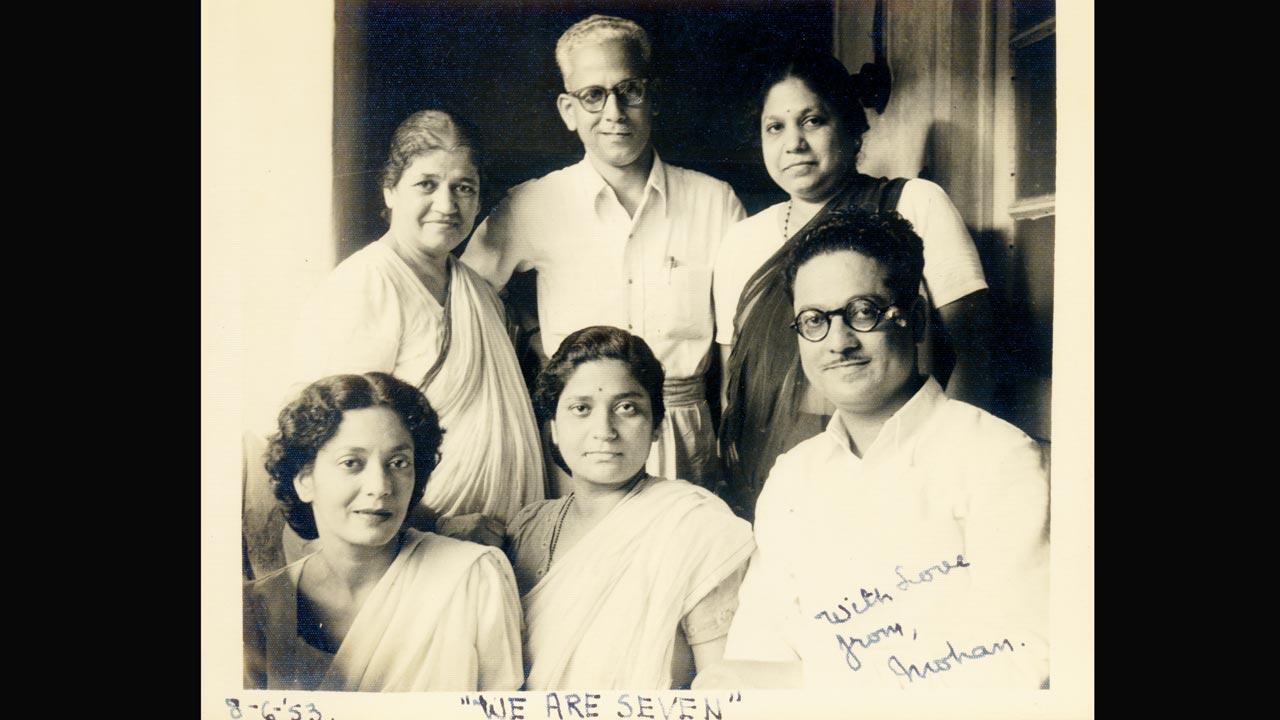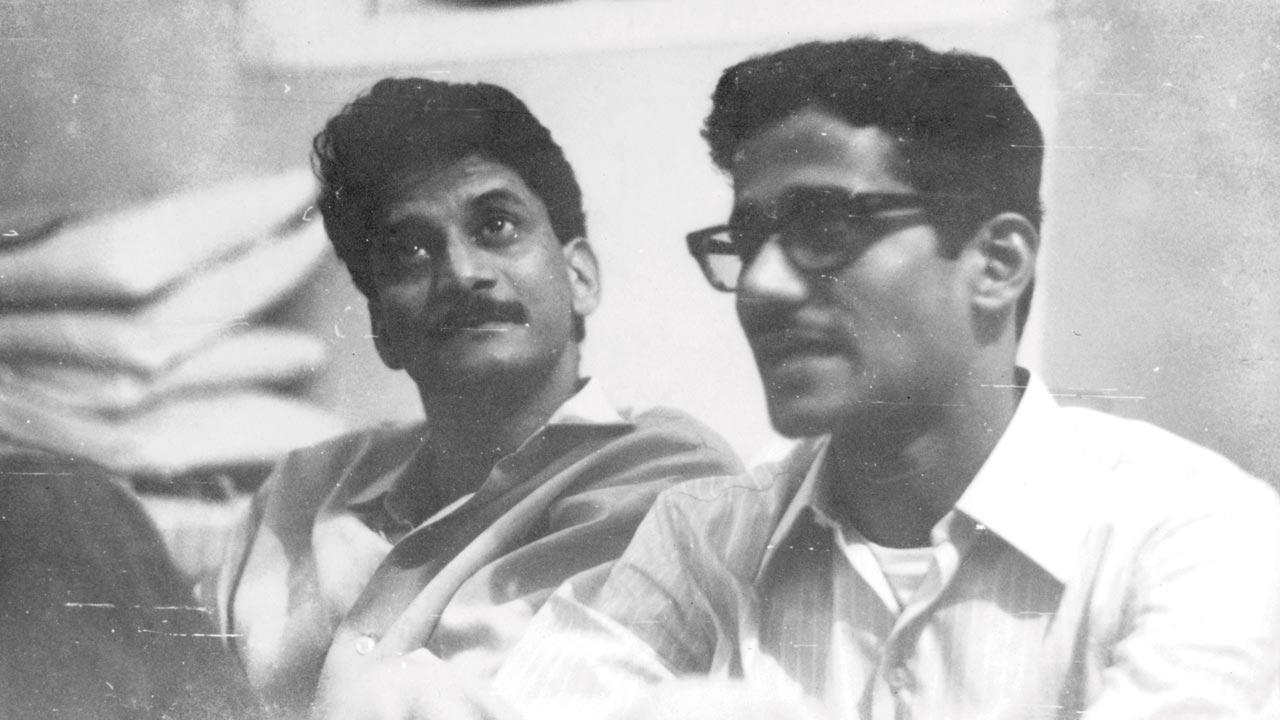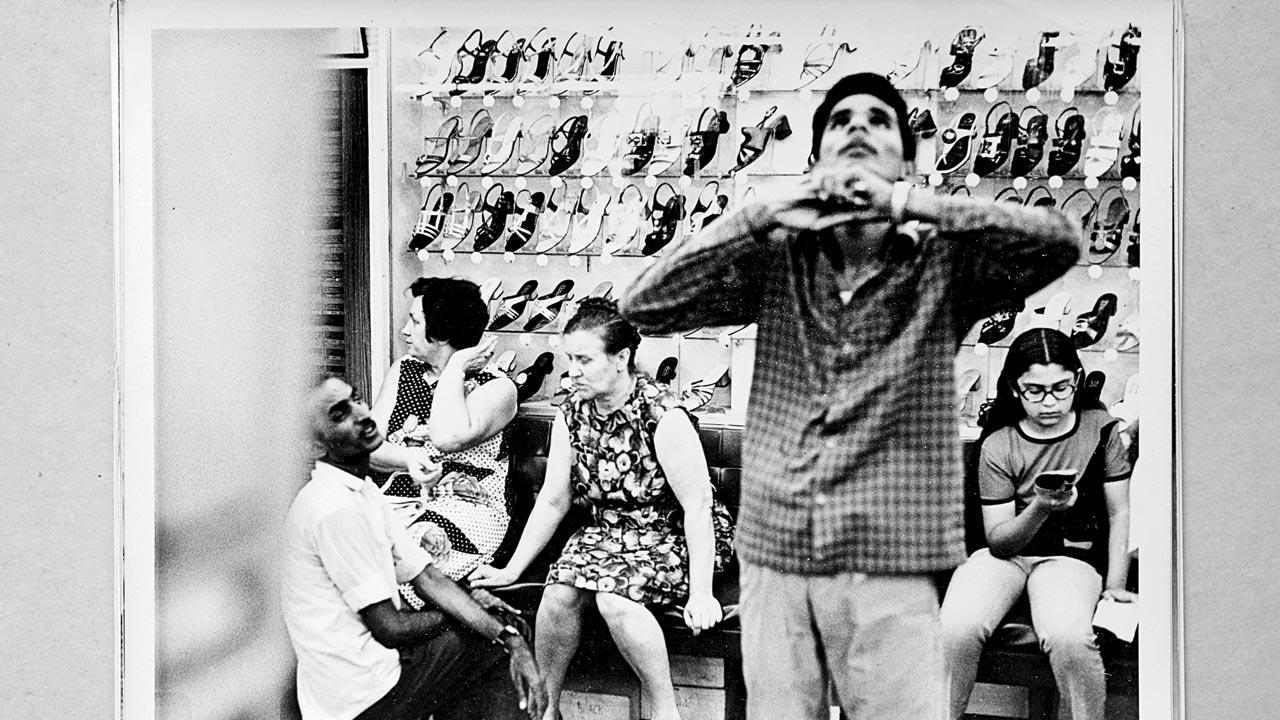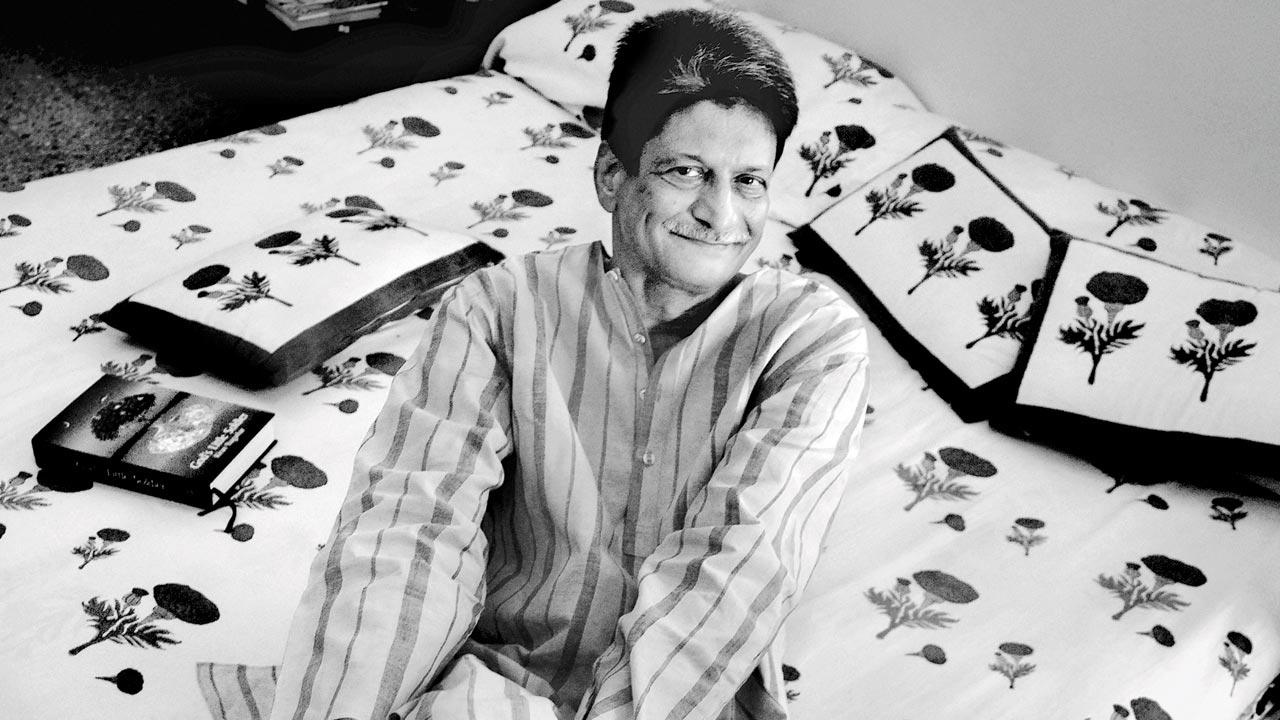Friends and colleagues celebrate the multi-hyphenate that was Kiran Nagarkar in a retrospective that dips into family archives, manuscripts and advertising copy

Kiran Nagarkar’s father Kamlakant’s family. (From left) Kamlakant’s siblings actress Leela Chitnis, Shalini and Mohan. He is missing from this frame
For any Bombay writer, reading Kiran Nagarkar’s literature is part of the initiation rite, just like Saadat Hasan Manto or the more contemporary, Jerry Pinto. The discerning ones might stay uninfluenced. But for some, Nagarkar’s writings will continue to haunt their own body of work. His witty prose, which swayed from ribaldry to the obnoxious, and the tragicomedy of city-life permeate his Ravan and Eddie series. We think it got sullener with his last work Jasoda, where the cruel poverty of Mumbai appeared to be no joke for the writer or his eponymous protagonist. Jasoda, he told us, when we last interviewed him in October 2017, was his “superstar” and had been with him for nearly 20 years. We remember him saying how glad he was to have been able to complete the novel. He passed away two years later, on September 5, 2019.
ADVERTISEMENT
Walking into Idea Creative Solutions, a digital photography service in Prabhadevi, it feels like Nagarkar has returned to life. Black and white portraits of his are being printed on a large roll of glossy paper. The images emerge slowly from the printer—there’s a tight close-up of him by Chirodeep Chaudhuri, one of Raghu Rai’s where he is sitting at the edge of a bed, and a happy portrait by friend Abodh Aras. Everywhere, Nagarkar is smiling broadly. We can almost hear him whisper, his funny-side intact: “I’m literally on a roll.” Padma Shri-award winning documentary photographer Sudharak Olwe, who this writer is here to meet, is guiding the printers. They are sifting through a vast tome of pictures from Nagarkar’s personal archives, digitised by his partner Tulsi Vatsal last year. Olwe has only read one text by Nagarkar. His first novel in Marathi, Saat Sakkam Trechalis. “I have been a fan ever since,” he tells us. And no ordinary one at that.
 Nagarkar with brother Jyotee
Nagarkar with brother Jyotee
Since the beginning of this year, Olwe has been hoping to put together a retrospective to celebrate the literary genius’s vast oeuvre. His 80th birth anniversary, which fell on April 2, would have been the perfect occasion for the tribute. But, gallery dates, he says, eluded them. Just last week, he was told of the availability of the Jehangir Art Gallery. Determined to take it forward, even though a few days late, Olwe reached out to Vatsal, colleagues and friends, to contribute their pictures for the week-long retrospective. 80 Frames: Kiran Nagarkar, the man, the times, his work, will be open to the public from April 5 onwards. “I first met Kiran when his novel Cuckold released [in 1997]. I had been asked to do a shoot with him for the publication I was working with,” recalls Olwe. “Over the next 20-odd years, I would keep meeting him, for one shoot or another. He was a very interesting person. He won people over with his humour. We both were shy, but we started bonding over photography and writing.”
One of his favourite memories, he says, was going for a walk with the writer around Worli. “I remember taking pictures of him in the rain. Just before he was admitted to the hospital, he had sent an email to me, saying he wanted to see those photos.”

Nagarkar's monochrome photographs capture sights and sounds from the city
Last year, when Vatsal reached out to Olwe to help her scan rare photographs from Nagarkar’s personal family albums, some dating back to the early 1940s—all previously unpublished—he realised that there was a treasure that was waiting to be seen. Unbeknownst to him, there were a large pool of photos taken by Nagarkar, as well as advertisements, written by him. Ad film director and photographer Prashant Godbole helped digitise these, says Olwe. Nagarkar’s photos and papers, including his correspondence, articles, interviews and short stories were later donated to the Ashoka University by Vatsal. “When I was planning the show, I was only thinking of showcasing pictures from his family archive,” he says. “But there was this other side to him that many people didn’t know about.” Apart from this, Olwe also put out an open call, asking photographers to share their pictures of Nagarkar taken over a period of time. Selected images by Sunhil Sippy, Prabhat Singh, Shraddha Bhargava, Aparna and Sudharak Olwe among others will be displayed at the show. “We will also be displaying handwritten manuscripts of his,” he says.
Communication design practitioner Sunil Mahadik, who collaborated with Nagarkar on several ads, says that the writer along with art director-poet Arun Kolatkar, became the most sought after advertising pair in the 1960s and ’70s. There are a range of Otis Elevator Company India Ltd ads, where Nagarkar’s copy persuades the reader to opt for the company’s maintenance services. “Any fly-by-night outfit can look after your Otis elevator cheaper than Otis can. The question is: For how long?” reads one. Another one says: “These days anyone with a grease gun thinks he can service an Otis elevator”. “I was immensely inspired by the work Kiran and Arun were doing at [the agency] MCM. They were the superstars of the fraternity. Many of us would throng Wayside Inn, the most popular haunt then, just to catch a glimpse of them. In today’s time, I would equate that to standing outside Amitabh Bachchan’s bungalow. When they joined the advertising agency Chaitra in the early ’80s, I told them that I’d like to work with them. I was hired as visualiser,” he shares. Some years later, long after Mahadik had left Chaitra, Nagarkar approached him and asked if he wanted to collaborate. “By then, Arun had moved away from advertising and was focusing on his writing.
 Nagarkar was deeply affected by the changing social and political climate; some of his works, Bedtime Story and God’s Little Soldier, reflect that angst. Pic courtesy/Raghu Rai
Nagarkar was deeply affected by the changing social and political climate; some of his works, Bedtime Story and God’s Little Soldier, reflect that angst. Pic courtesy/Raghu Rai
This was a turning point for me. Just working with Kiran, Arun’s famed partner, was a huge confidence boost for a young art director like me. It was like working with a volcano of ideas.” In 2012, Nagarkar was inducted into the Cag Hall of Fame, for his contribution in pioneering some of the finest campaigns in Indian advertising.
Chaudhuri, who first met Nagarkar during one of his photography assignments, remembers bonding with him, mostly because they had many common friends. “He loved teasing me and that too in Hindi. Each time he came to one of my shows or saw me at a gallery, he’d joke, ‘Kya too sochta hai, tereko hi aata hai black and white’. He told me about his love for photography, but I never had a chance to see it in person.”
Nagarkar’s monochrome images capture sights and sounds from the street—tight portraits of faces that you’d otherwise not notice, ruinous scaffolded buildings, rodents and attentive cats. “He was a people’s photographer. He has a very unique way of seeing images and taking pictures. I think his height helped him,” feels Olwe.
There’s also the thinking side of Nagarkar. The commentator and film critic. He was deeply affected by the changing social and political climate—his works, Bedtime Story and God’s Little Soldier, reflect that angst. He also enjoyed the movies. When this writer met him last, he rued about how he couldn’t watch films, because “he needed to get his eyes checked”. The final year of his life was shrouded by the #MeToo controversy, allegations he strongly defended. But, for the longest time, Nagarkar was a gift that simply kept giving. One retrospective, his friends and colleagues say, may not be enough to tell that story.
 Subscribe today by clicking the link and stay updated with the latest news!" Click here!
Subscribe today by clicking the link and stay updated with the latest news!" Click here!







